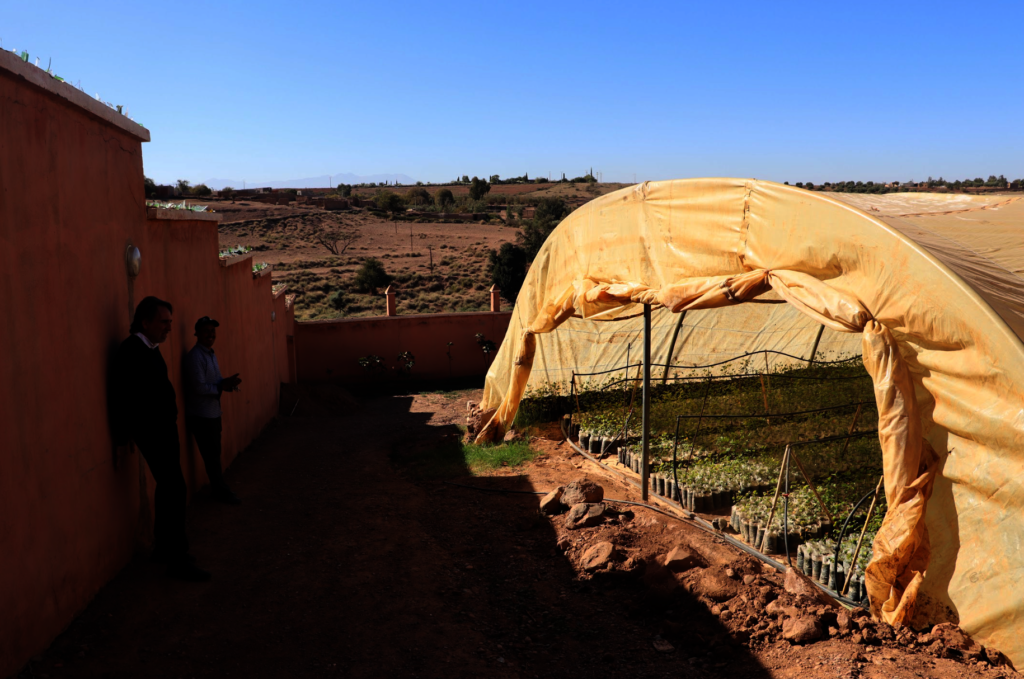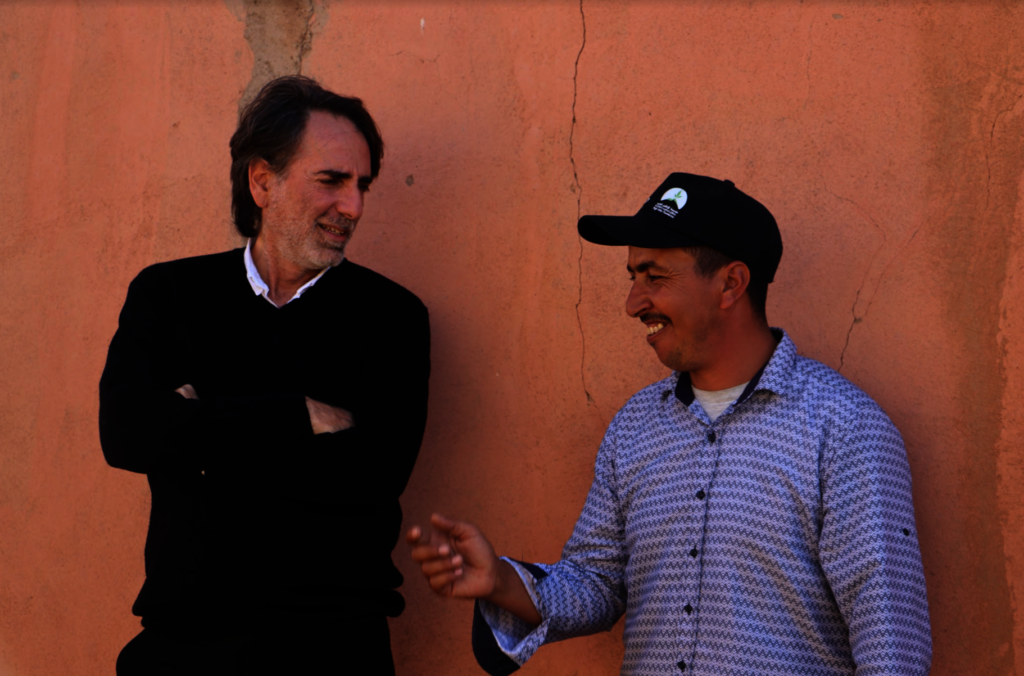By Comms Team | High Atlas Foundation
In the Marrakech region of the Kingdom of Morocco, specifically in the village of Akrich in the Tameslouht municipality, there is a 700-year-old Jewish cemetery and shrine. There are six hundred of such Hebrew saints buried in Morocco with adjacent empty spaces where farming families and communities can plant nurseries.
This one is a 12-year-old nursery that is the pilot in the country. Right now, it generates 46,000 trees a year, mostly carob but also fig and pomegranate.
Abderrahim is the third-generation guardian of the saint that’s buried here, and he also maintains the nursery. The responsibility to manage this area has been in his family for almost a hundred years.
The basin was paid for 50% by the Moroccan Jewish Community and 50% by the High Atlas Foundation. There's a solar water pump system that was provided by a consortium of Moroccan renewable energy companies called FENELEC.
In one of several greenhouses, there are 7,500 carob saplings growing. A carob tree can live 200 years. The remarkable thing about carob is that the global prices have tripled over the past few years. In Morocco, the domestic price was around $1.20. Now it's actually closer to four times that - it's over $4 per kilogram. A mature carob tree can generate 500 kilograms! It takes 10-12 years for a carob tree to mature, but one can see how one of these trees can generate a tremendous amount. In another greenhouse, there are 14,500 more carob saplings being raised.
In yet another greenhouse, there are medicinal plants--rosemary, sage, and thyme, for example--which are lined between the tree rows. This adds nutrients and so forth, but also, importantly, medicinal plants can be harvested once or twice each year. So whereas the carob takes 10 to 12 years or even up 15 to start generating product in an amount that really makes a profound difference for farming families, they immediately gain income every year through the provision of medicinal plants.
Then you have pomegranate. Pomegranate grows organically in Morocco. They live about 40 years. There’s more than 4,000 hectares of pomegranates in Morocco, and the next step is to be able to implement value-added processing, which allows for the real value of what farmers grow to remain in their village.
The next section is fig. One particular fruit tree sapling has grown from approximately 10 cm to about a meter or taller since January -- about 11 months. In the earlier years, almond and other varieties, which are organic, were grown here, but they required more water, and they weren't as productive as fig, carob, and pomegranate.
What has been learned from this nursery over the last 10 to 12 years? There are 46,000 trees now that are growing. In the earlier years, there were only about half of this. How did the number increase so much? According to Abderrahim, it really was because of the investment in water infrastructure--the containment system, the basin, the way that the water is now retained in the soil, and the way it's being planted and held in place.
It's so important that interfaith relationships result into human development. That's Moroccan policy and way. And that's how cultural preservation and the connectivity between diverse groups remains solid and is cemented.
--
This text is adapted from the partial transcript of a video tour of the Akrich nursery, delivered by the HAF President and featuring Abderrahim the guardian. The video was filmed on November 27, 2022.
Links:
By Hanna Tuoriniemi | HAF Intern and University of Michigan Student
By Cyrena Matingou | HAF-UVA Intern
Project reports on GlobalGiving are posted directly to globalgiving.org by Project Leaders as they are completed, generally every 3-4 months. To protect the integrity of these documents, GlobalGiving does not alter them; therefore you may find some language or formatting issues.
If you donate to this project or have donated to this project, you can receive an email when this project posts a report. You can also subscribe for reports without donating.
Support this important cause by creating a personalized fundraising page.
Start a Fundraiser

